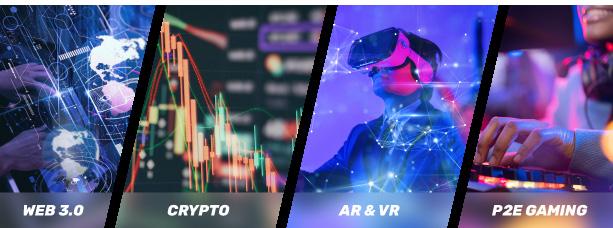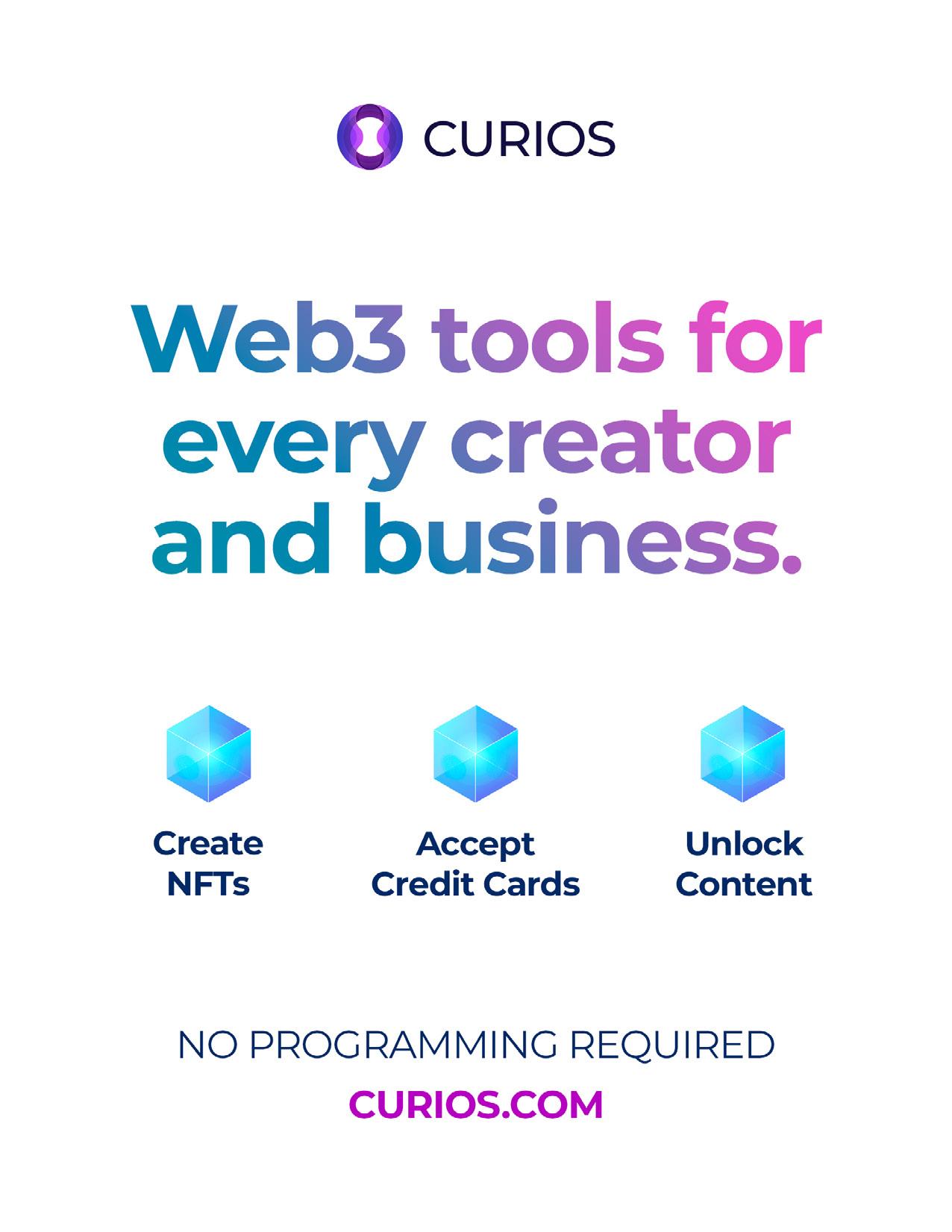


































































 By Juanita Rico
By Juanita Rico
Cannabis and NFTs are two industries that have exploded in the past 5 years. The legal cannabis industry had global sales of $37.4 billion in 2021, according to The Cannabis Global Report. Likewise, according to CNBC, the NFT industry had $5.4 billion in profit in the same year. These numbers show that they are both booming sectors, proposing new ways of doing business.
NFTs can bring big pros to the cannabis world, like, for example, being a way to register crops so that there is a digital record, timestamped, unalterable that shows you were the first to create a particular strain.
These are some more initiatives showing how NFTs and cannabis intersect and how they can help each other grow.
The Crypto Cannabis Club is a club that has 10,000 NFToker avatars that reflect all types of cannabis users. Each token is created by an algorithm that combines different professionally illustrated properties. Regarding cannabis, the website is used to create and sell cannabis plant NFTs on the markets. It works with cannabis brands to generate exclusive merchandise and collaboration with their holders. Additionally, every Wednesday, they publish a podcast that focuses on going to trade shows in the US, Canada, and Europe to educate the cannabis community about NFTs. They work across three metaverses or digital economies; their developers work to push forward interactive communities.
Nektr
NEKTR has a wild and innovative premise. They are the first cannabis NFT game tokens. That means that they allow their holders to playto-earn (P2E) low or no-cost medical grade cannabis or hemp products. They promote spiritual and physiological balance. They work like this: users can buy Nktar by purchasing a Binance Coin (BNB) crypto and swapping it for a Nektr share. There are QR Codes that help to make the process easier and faster.
PotPunks will launch on April 20th, and it aims to celebrate the different types of cannabis users. They will have six character types that range from human to animal and more. They will all be holding a joint, bong, vape, or any other kind of cannabis medium. Initially, they will drop 420 PotPunks through the OpenSea market, and 5 percent of their profits will go to the Weldon Project that helps financially aid people in jail for cannabis.
40 Tons NFT
40 Tons is a social impact initiative that seeks to help people incarcerated for cannabis. It is

a clothing and accessories company based in Los Angeles. Every time someone purchases one of their NFTs, they help a convict by supporting foundations that help to better their life in prison.
Currently, they have 53 NFTs selling on OpenSea. Their NFTs feature cell booths; they also have Potcoins available for purchase.
This website creates art for cannabis and CBD products they sell. Their objective is to feature the connection between art and cannabis strains and to explore the diversity within the cannabis world. They have over 65 cannabis strain art designs that can be purchased on OpenSea. They support the Last Prisoner Project that works towards setting all prisoners in jail for cannabis free.
This collection is unique because, depending on how much NFTs are sold, the perks are better for their holders; for example, when they hit 60% of sales, their rarest NFTs will be given randomly to holders. They also support the Last Prisoner Project and the Redemption Foundation.
Blazed Cats is an NFT collection that has 10,000 hand-drawn NFTs. They are furry friends with diverse traits and accessories. They have in common that they all have cannabis paraphernalia and depict a type of cannabis user.
Every time someone buys a Blazed Cat, 10 percent of the profit goes to Mental Health America (MHA), a non-profit dedicated to addressing the needs of those living with mental health illnesses.

Digi Strains is an NFT collection created by Peakz that offers legal digital weed as an NFT on OpenSea. Their first drop sold out, and it displayed colorful cannabis nugs. They have had other drops, each with a different color pallet and old video game style and spin.
Cannasaurs are unique, hand-drawn cannabis dinosaur NFTs with random features. There are 4,420 Cannasaur that dropped in December 2021.
Weedgang is founded by prominent breeders, cultivators, and cannabis leaders. Their NFTs depict cannabis strains, and they aim to share their love for the cannabis industry. The art of their NFTs represent data specific to each strain like its name, the percentage of CBD and THC, and their unique color.
Stoner Cats was created by animators, tech, and NFT experts. It is a show that can only be watched by those who hold a Stoner Cats Token.
















With so many options to choose from, choosing which blockchain to mint your NFTs on can be a tricky matter. Here’s are the top 5 best blockchains for NFTs.
With a seamless user experience and a committed team of programmers, this platform was made with scalability and flexibility.
Flow is exceptionally versatile when it comes to making NFTs with unique utilities, executing 10,000 transactions per second at a low cost.
With an advanced proof-of-stake-powered architecture, Cardano offers a lot of flexibility for developers creating scalable applications on its blockchain.

Although not as high in performance as some of its counterparts, its support for applications makes it ideal for NFTs made for specific platforms and games.
Currently one of the biggest candidates to potentially outmarket ETH and Cardano, Solana stands strong with over 400 Web 3.0 projects.
With extremely high performance of over 65.000 transactions per-second at low fees, this is one of the first alternatives to consider for minting or trading NFTs.
In addition, Solana prides itself on being one of the only carbon-neutral blockchains in the market.
Ethereum
Ethereum is by far the most popular blockchain for NFT projects. Featuring the biggest NFT marketplace in the world, OpenSea.
A large platform means a large community, an accessible API, and tons of knowledgeable and experienced users familiarized with the blockchain, who are always willing to help newcomers.
However, these advantages also come at a cost, as the famous “gas fees” charged on the Ethereum platform can be expensive.
There is no definitive answer as to which blockchain is the best for an NFT.


